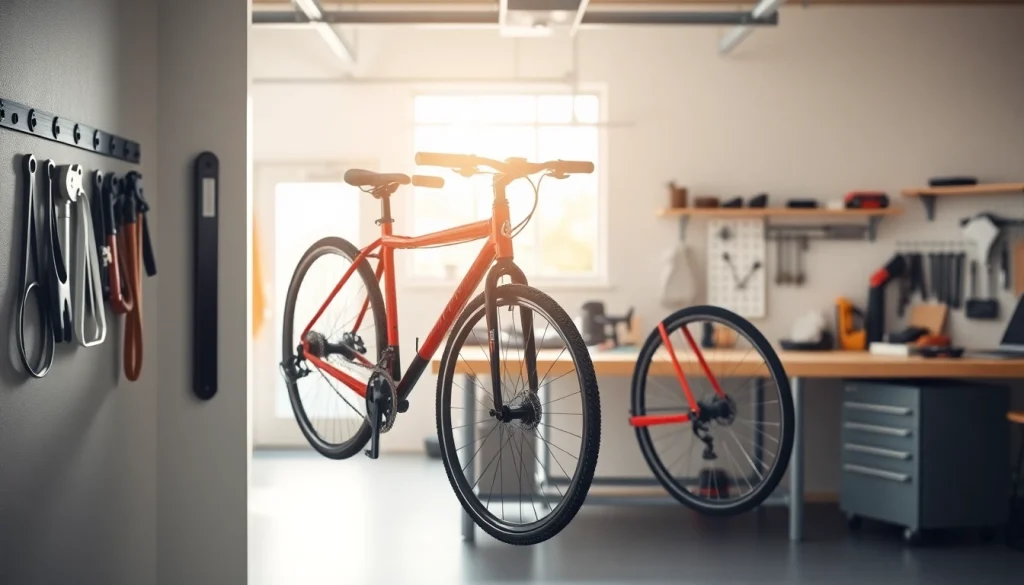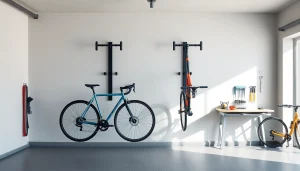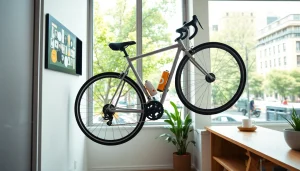Essential Tips for Choosing the Best Bike Rack for Home Use

Understanding Different Types of Bike Rack for Home
Freestanding vs. Wall-Mounted Bike Racks
When choosing a Bike rack for home, understanding the different types is crucial. Freestanding bike racks offer flexibility and can be placed in any area of your home. These racks are typically more straightforward to set up and can hold multiple bikes without the need for wall space. They are perfect for garages, basements, or even indoors where wall mounting is not an option.
Wall-mounted bike racks, on the other hand, are designed to be attached to a wall, which saves significant floor space. They are often more secure and can provide a clean, organized appearance, making them ideal for smaller spaces such as apartments or townhouses. Wall-mounted options come in various styles, including hooks and shelves, catering to different preferences and bike types.
Vertical vs. Horizontal Bike Storage Solutions
Bike racks can also be categorized by their orientation—vertical or horizontal. Vertical bike racks stand upright and typically need less floor space, making them suitable for small areas. These designs allow for bikes to be stored one above the other or leaning against each other, maximizing vertical space efficiently.
Horizontal bike racks, conversely, lay bikes flat and are more appropriate for larger spaces where width is not an issue. They are often more stable as they distribute weight evenly. Many users prefer horizontal solutions for easy access and quick retrieval, especially in settings where bikes need to be taken out frequently.
Indoor vs. Outdoor Bike Rack Options
The placement of the bike rack is another vital consideration, as you’ll need to discern between indoor and outdoor racks. Indoor bike racks are generally designed to be visually appealing and may include features like decorative finishes or smart designs that blend with home interiors.
Outdoor bike racks, however, need to withstand the elements. They are typically made from rust-resistant materials, ensuring long-lasting durability against weather exposure. These racks can be permanently installed in gardens, yards, or driveways, providing a convenient solution for outdoor bike storage.
How to Select the Perfect Bike Rack for Home
Assessing Your Space: Measurements and Layout
Start by assessing the space where you plan to set up your bike rack. Measure the dimensions of the area—this includes width, height, and depth. Consider any obstacles like doors, windows, or shelving units that could interfere with bike accessibility. Make sure to leave enough room for maneuvering your bike in and out. Keeping these measurements in mind will help you narrow down your options and prevent the likelihood of purchasing a bike rack that doesn’t fit.
Evaluating Bike Storage Capacity
When selecting a bike rack, consider how many bikes you need to store. If you’re a single bike owner, a simple wall-mounted option might suffice; however, families or enthusiasts with multiple bikes may require a larger freestanding or wall-mounted solution. Ensure your chosen rack can accommodate the number of bikes you own and make provisions for potential future additions.
Material and Durability Considerations
The material of the bike rack significantly influences its durability and longevity. Look for racks made of steel or aluminum as they generally offer better support and resistance to wear and tear. If you choose an outdoor rack, ensure it has coatings that resist rust and UV damage to prevent degradation over time. Assess the warranty offered by manufacturers, as a longer warranty period often indicates a higher-quality product.
Installation Tips for Your Bike Rack for Home
Step-by-Step Installation Process
Installing a bike rack can be a straightforward process if you follow these steps:
- Gather Your Tools: Depending on the type of rack and location, ensure you have the necessary tools such as a drill, screws, and a level.
- Choose the Right Location: Decide where you want to place your bike rack, ensuring it’s accessible yet discreet to maintain the aesthetics of your space.
- Mark the Installation Points: Use a pencil to mark where the screws will go based on your bike rack’s design. Use a level to ensure marks are even.
- Drill Holes: Drill pilot holes based on the markings. For wall-mounted options, ensure you hit studs where possible for better support.
- Attach the Rack: Secure the bike rack using screws, ensuring everything is tight and stable.
- Test Stability: Before placing your bikes on the rack, test its stability to confirm that it can hold the designated weight.
Tools You Will Need for Installation
The tools required can vary based on the bike rack type but typically include:
- Drill
- Stud finder (for wall-mounted racks)
- Screwdriver
- Level
- Tape measure
Maintenance Tips for Longevity
To ensure durability and performance, regular maintenance of your bike rack is vital. Here are some tips:
- Clean the rack regularly to avoid rust or corrosion, especially if it’s outdoors.
- Inspect for loose screws or bolts, tightening them as needed.
- For outdoor racks, consider applying rustproofing spray to exposed metal parts.
Common Challenges and Solutions with Bike Racks
Tackling Stability Issues
Stability is crucial, especially for freestanding bike racks that can tip if not properly secured. If you experience stability issues, consider adding weight to the base or wall-mounting the rack to ensure it does not move. Additionally, regularly check and tighten bolts or screws to enhance stability.
Maximizing Space in Small Areas
For those with limited space, maximizing bike rack functionality is vital. Utilize vertical bike racks that save floor space and consider racks that allow for horizontal or angular configurations. Storeless bikes can be hung on the wall or ceiling to further enhance available space. Multi-functional racks with added shelves or hooks can also help in organizing accessories.
Weatherproofing Outdoor Racks
The longevity of outdoor bike racks can be challenged by various weather conditions. To weatherproof your outdoor bike rack, ensure it is constructed from rust-resistant materials. Additionally, consider applying weather-resistant finishes or protective coverings to shield against rain, snow, and UV radiation.
Maximizing the Value of Your Bike Rack for Home
Accessorizing Your Bike Rack for Enhanced Use
Enhance your bike rack’s functionality by accessorizing. Consider adding hooks for helmets and cycling gear, shelves for bicycle cleaning supplies, or baskets for storing small items. These accessories enable you to keep everything organized and in one place, simplifying your cycling routine.
Organizational Tips for Better Space Management
Effective organization around your bike rack can create a more functional space. Use labels on bins or baskets to quickly identify items. Hang keyrings for easy reach, and utilize shoe organizers to store smaller accessories. A well-organized space not only looks better but also makes riding more efficient.
Using Your Bike Rack for Additional Storage
Consider your bike rack as an alternative storage solution. For instance, a freestanding rack can double as a storage unit for cycling gear, tools, or other items when not in use. Shelving units can provide added support for carrying items such as pumps, tires, or even outdoor sports gear, making it versatile not just for bikes but for all your cycling needs.






